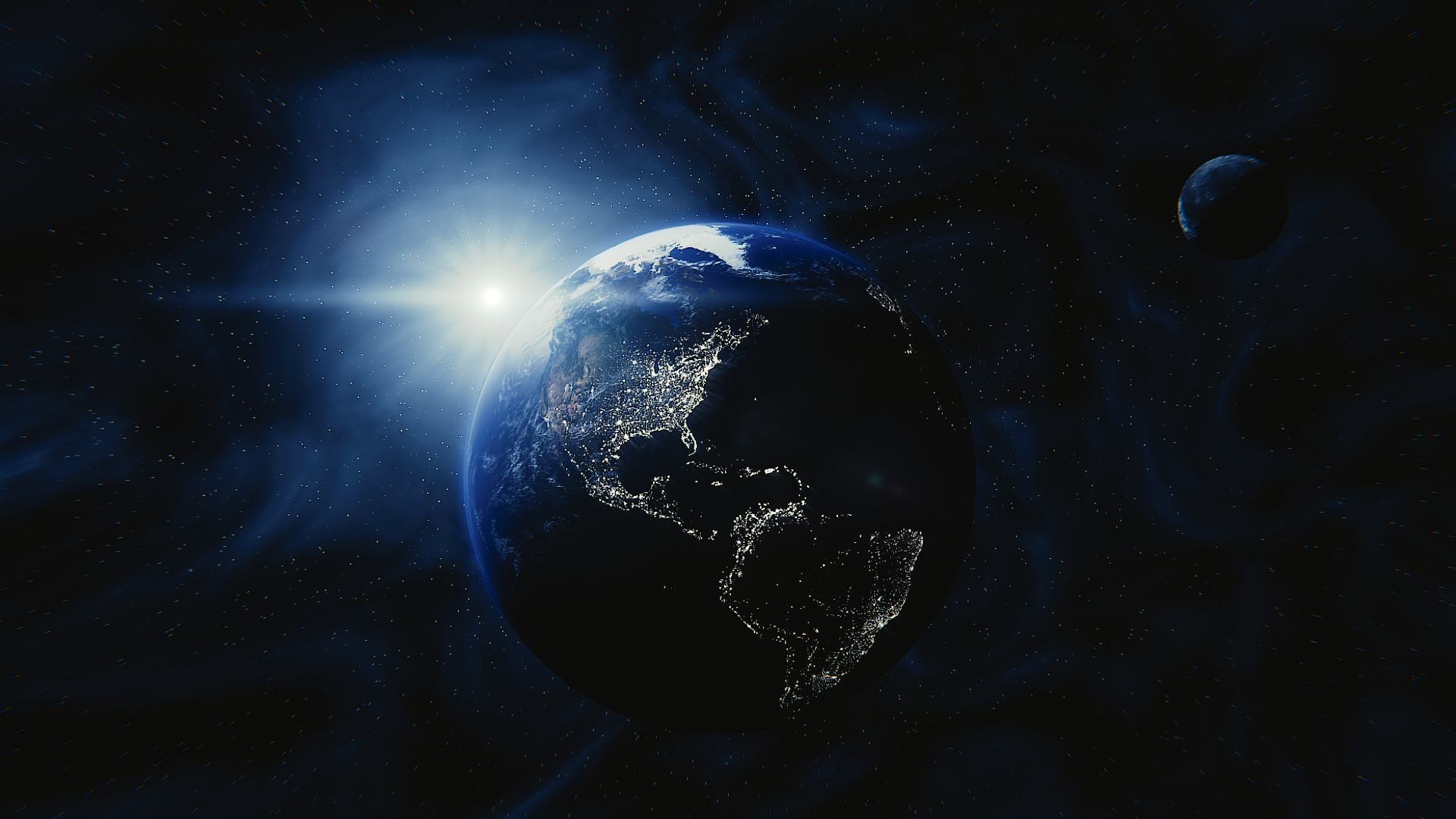
The Anthropocene as the age of life exploitation
Agriculture
Agriculture is an essential activity by which humans shape Earth's surface.
About 40% of world's land [1] and half of world's habitable land [2] would be used for agriculture.
About 75% of agricultural land is used for meat production, through grazing and fodder production [1, 2]. Wheat, maize and rice together occupied the majority of cultivated land [3].
Agriculture drives forest cover. In so-called developing countries such as Brazil or Indonesia, the increase in agricultural land is at the expense of forests and leads to deforestation [4].
In so-called developed countries like France, deforestation took place long before and the implementation of an intensive agriculture in recent decades has led to a phenomenon of forest expansion after centuries of decline in forest areas [5].
The figures regarding the exploitation of animals are impressive: for example, 300 million cows, 600 million sheep, 1 billion pigs or 70 billion chickens are slaughtered each year [6].
Within mammals, humans and their farm animals account for 96% of the biomass [7]. Similarly, poultry make up 70% of bird biomass [7].
By inducing land-use change at global scale, agriculture contributes decisively to the degradation of habitats and therefore to the ongoing collapse of life [8]. So-called "conventional" agriculture, using large quantities of pesticides [9], considerably aggravates the phenomenon.
Agriculture also contributes nearly 20% of global greenhouse gas emissions, particularly through livestock farming which releases methane, the spreading of nitrogenous fertilizers which generate nitrous oxide and deforestation [10]. Again, so-called "conventional" agriculture aggravates the problem with massive use of nitrogenous fertilizers [11] and practices geared towards meat production.
In the end, agriculture appears to be a fundamental component of the Anthropocene as its impact on the Earth's surface is strong: it drives land use and forest cover on a large scale, it deeply modifies the composition of animal and plant communities, and contributes decisively to climate change and biological annihilation. Who says better ?
Key messages
Agriculture shapes Earth's surface
In mainland France, more than 50% of the surface is used for agriculture, a figure that has been falling for decades due to the intensification of practices [3]. On a large part of this area, agriculture can indeed be described as intensive, with plots of great size on which large quantities of pesticides [9] and fertilizers [11] are spread.
Forest, for its part, covers about a third of the surface of mainland France [5]. The degree of human influence on forests is variable, the "Landes de Gascogne" forest in southwestern France constituting an extreme case in which the forest can be assimilated to a particular type of agriculture.
Images: Google Earth view near Chartres in France, with agricultural plots as far as the eye can see (top image); aerial photos of France, with agricultural plots near Chartres (middle left image) and maritime pine forest plots in southwestern France (middle right image); aerial photograph of a mix of maritime pine forest plots and crop circles in southwestern France (bottom image).
Source of images: Google Earth for the top image (https://earth.google.com/web/); IGN for other images (https://macarte.ign.fr/).
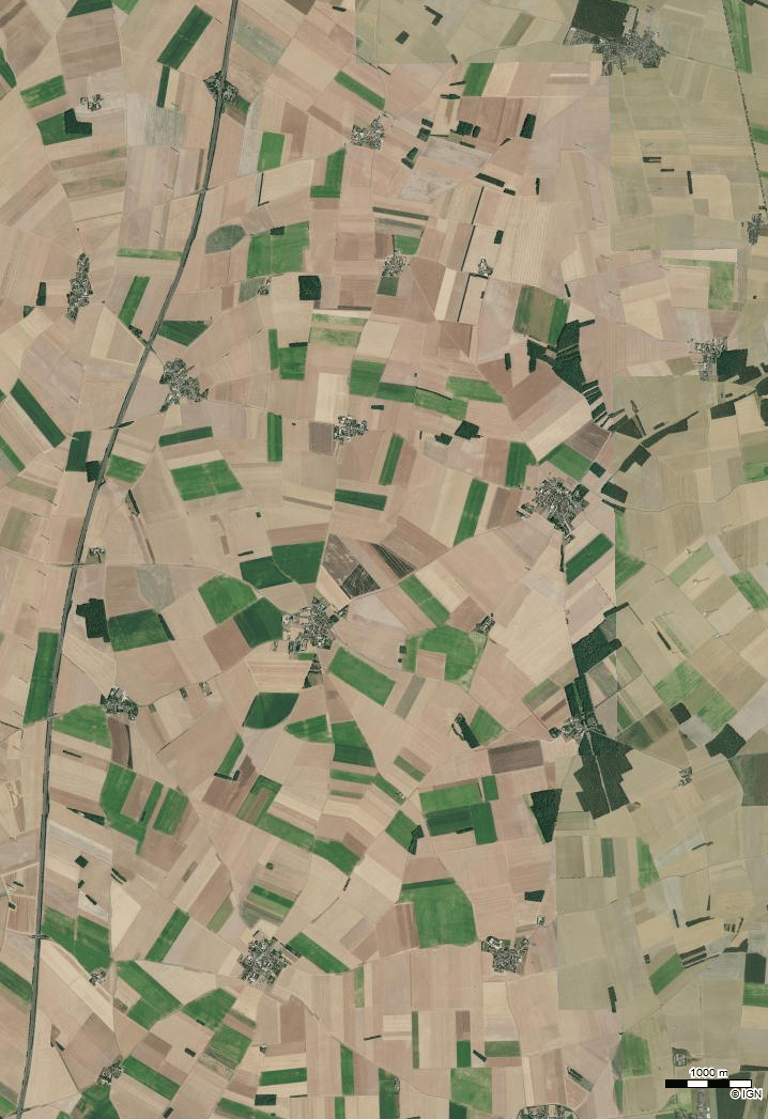
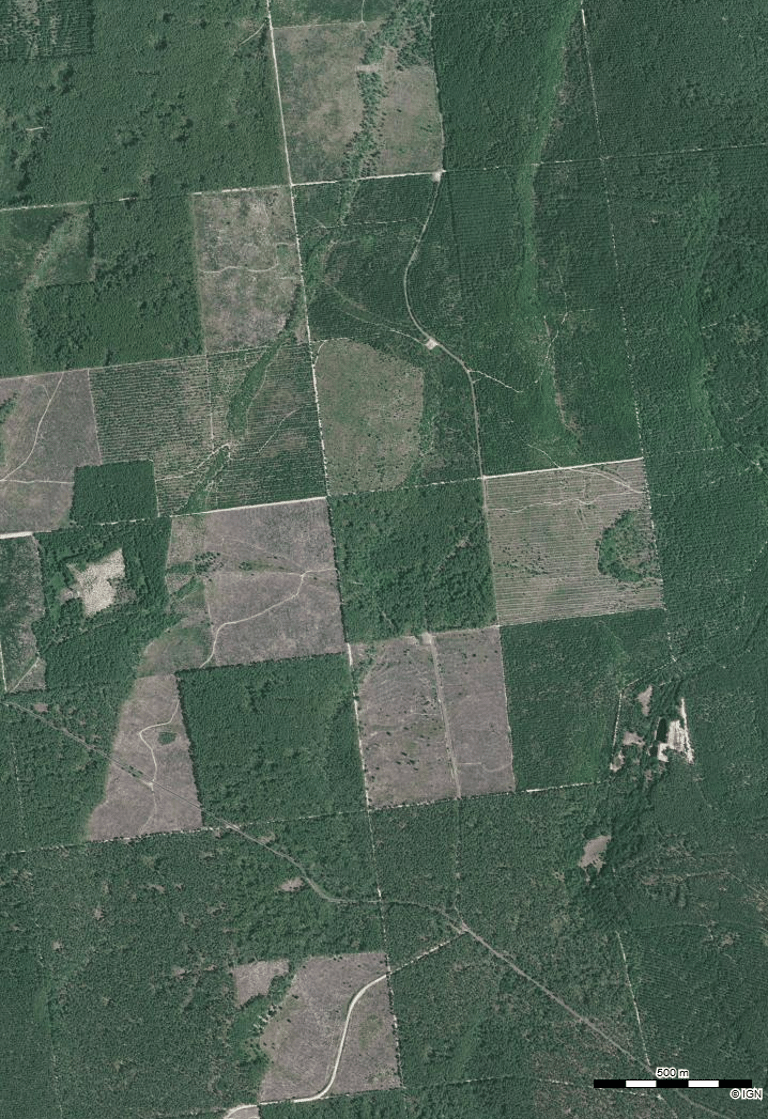


It is estimated today that 40% of world's land [1] and almost half of world's habitable land are used for agriculture [2]. Agricultural induces a major change in soil cover. Agricultural areas are generally characterized by the absence of trees or shrubs and by a considerable human influence (regular tillage, supply of fertilizers and pesticides, sowing, harvesting..., all with sometimes gigantic machines), so that they generally imply a considerable impoverishment of the diversity of life over large surfaces. Images: satellite view of crop circles with central pivot irrigation in Texas (left image) and satellite view of rice fields in the Mekong Delta in southwestern Vietnam (right image). Sources: NASA for the image on the left (https://earthobservatory.nasa.gov/images/5772/crop-circles-in-kansas); ESA for the image on the right (https://www.esa.int/ESA_Multimedia/Images/2020/03/Rice_fields_Vietnam).
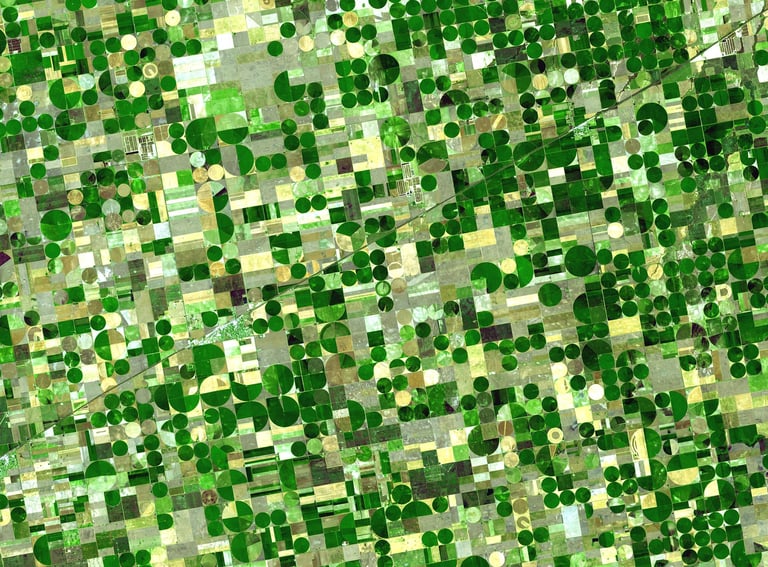


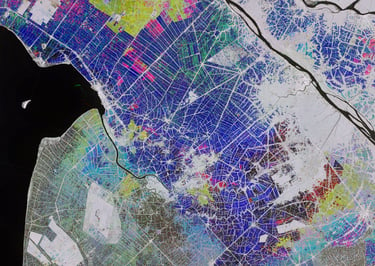
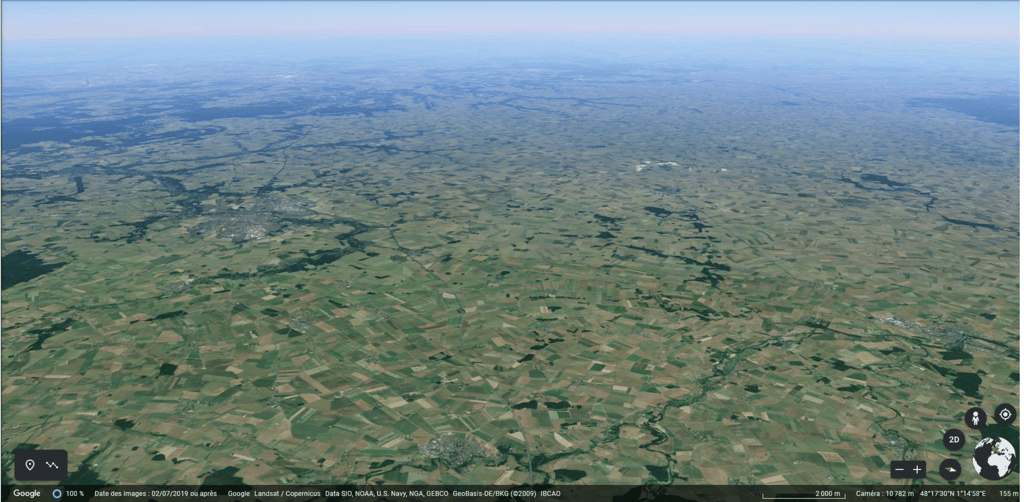

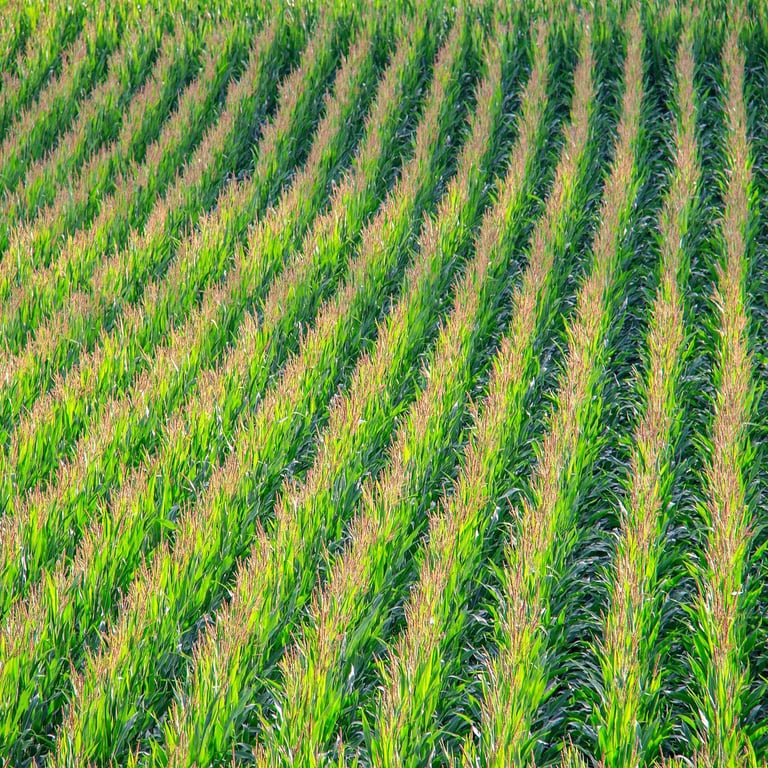
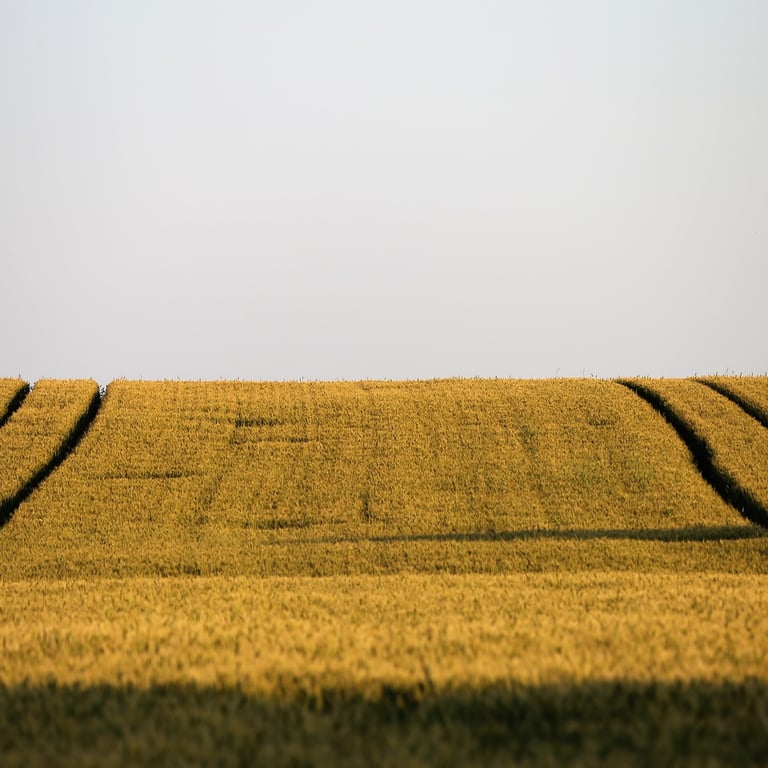
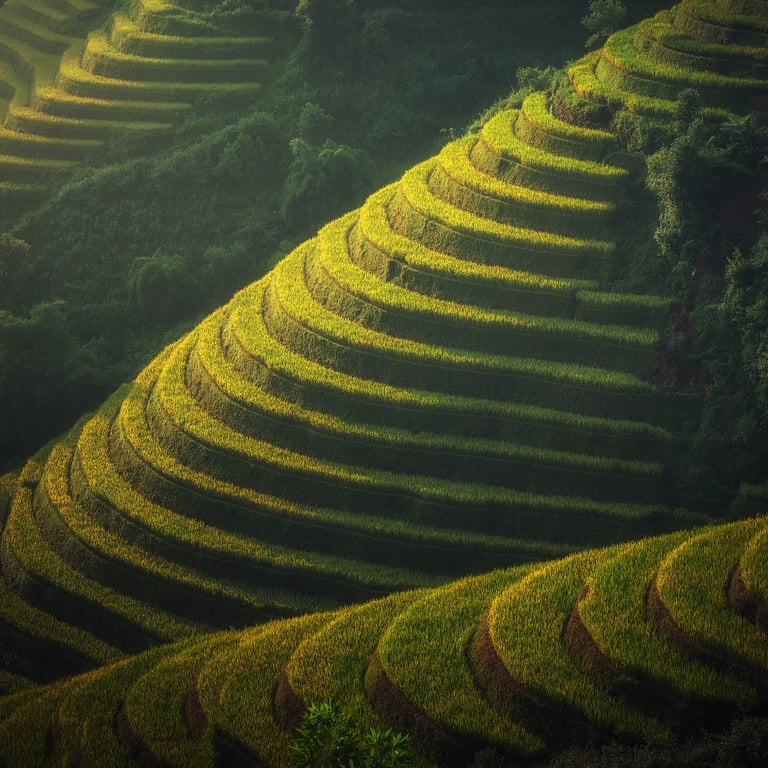
Corn (top left), wheat (top centre) and rice (top right and bottom) are the 3 cereals most cultivated by humans [3]. Like the vast majority of agricultural systems, corn fields, wheat fields and rice paddies induce a profound modification of the environment and leave very little room for the expression of life in all its diversity. Source of images: Pixabay for top images; Jialiang Gao, www.peace-on-earth.org, CC BY-SA 3.0, via Wikimedia Commons for bottom image.
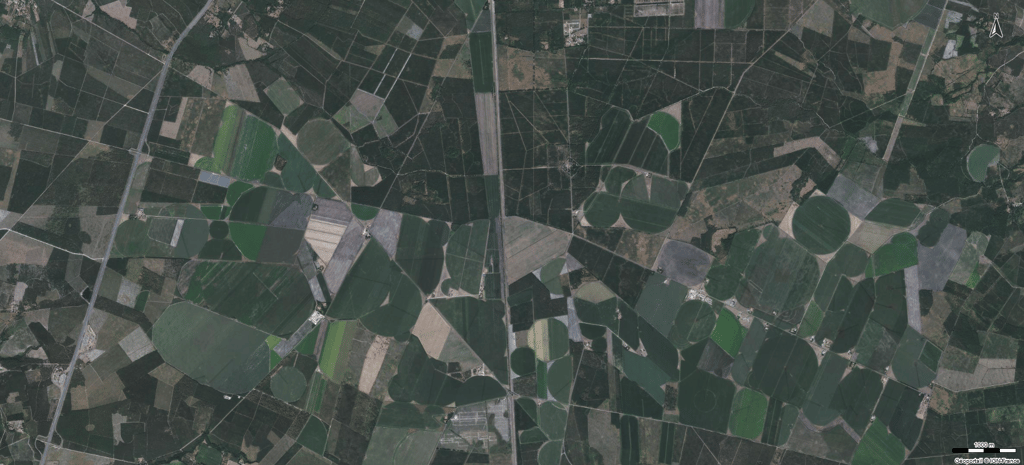


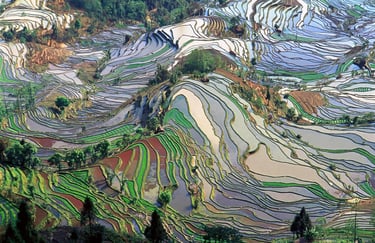

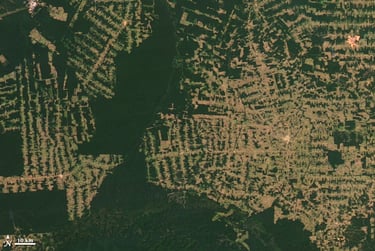

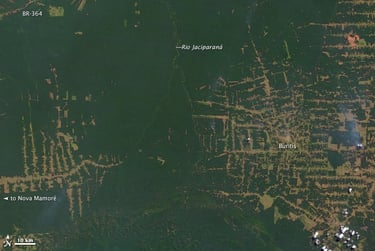
Since agricultural land usually replaces forest, agriculture has a major influence on forest cover. Since the Neolithic revolution some 10,000 years ago, the development of agriculture would have led to the loss of at least 1/3 of the surface of forest on Earth [4].
Even today, deforestation (i.e. the lasting loss of forest area to other land uses) is massive and reaches almost 6 million hectares each year [4]. It is largely concentrated in the tropics, in so-called developing countries, particularly in South America and South-West Asia.
The expansion of agriculture is the main cause of deforestation [4]. In South America, the expansion of cattle pastures is the main cause of deforestation. In Southwest Asia, palm oil cultivation and paper industry are two major causes of deforestation.
Images: satellite views of the Amazon rainforest in the state of Rondônia in western Brazil. The top image was taken in 2001, the bottom one in 2012. Between the two, deforestation by burning was massive, in order to extend agricultural land.
Source of images: NASA (https://earthobservatory.nasa.gov/world-of-change/Deforestation/show-all).
Agriculture drives forest cover
2000
2012
In the so-called developed countries, the phenomenon of deforestation linked to the expansion of agricultural land took place long before. For example, forest probably occupied around 90% of the surface of mainland France at the end of the last ice age [12]. The successive clearings started from 5,000 years before our era for agriculture led to a forest minimum towards the beginning of the 19th century [5]. The forest cover was then less than 15% of the surface of mainland France.
For several decades, we have been witnessing in many of these countries to a phenomenon of forest recolonization. In France, decades of forest expansion following the forest minimum have led the forest to now cover about 1/3 of the territory [5]. It should be noted that the forest expansion observed in some countries does not "compensate" for tropical deforestation: at the global level, the net loss of forest (deforestation + forest gains) is just under 5 million hectares per year [4].
The expansion of forest observed in some countries is due to the implementation of forest policies, but also to the establishment of intensive agriculture based on massive use of fossil resources (for mechanization, the manufacture of fertilizers and pesticides, etc.). This intensification considerably reduced the agricultural land required for food production. The spaces thus freed could then be recolonized by the forest or, to a lesser extent, be urbanized.
Images: aerial photographs of the town of Gérardmer in the Vosges (north-eastern France) in 1958 (top photo) and 2021 (bottom photo). The forest is (roughly) outlined with orange lines. We note between the two photos an expansion of the forest as well as urbanization, and conversely a sharp reduction in agricultural land. The case of Gérardmer perfectly summarizes the dynamics at work in certain developed countries, with the abandonment of agricultural land in favor of forests and urbanization. This transition is made at the cost of the implementation of an intensive agriculture less expensive in space, but based on fossil resources, consuming fertilizers and pesticides and emitting greenhouse gases.
Source des images : IGN (https://remonterletemps.ign.fr/).
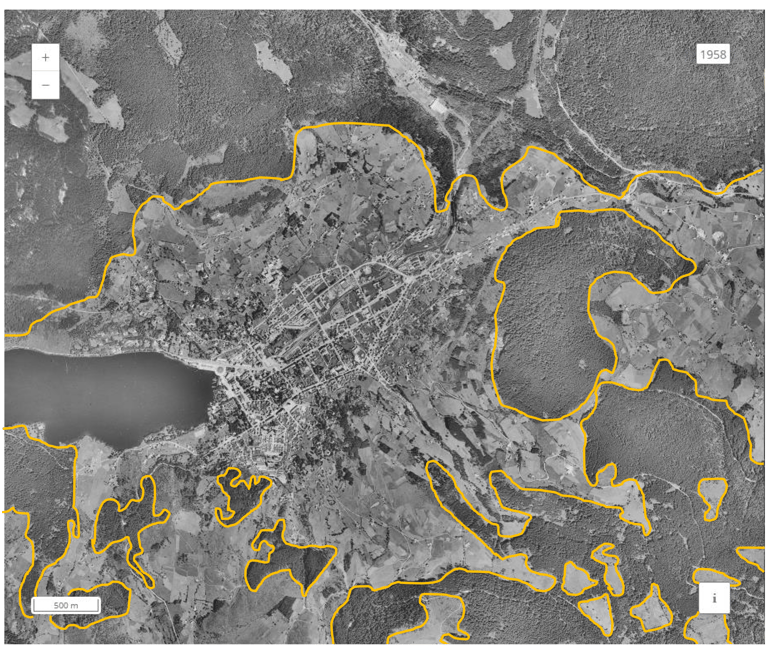



1958
2021
In so-called developed countries, the advent of fossil resources from the 19th century revolutionized agriculture, via the mechanization of practices and the production of synthetic inputs. Fossil resources provide the energy needed to operate increasingly powerful agricultural machinery and are the raw material for the synthesis of fertilizers and pesticides.
Globally, we have never used so many pesticides and fertilizers per hectare of cropland as today. For pesticides, nearly 2 kg per hectare of cropland are applied each year, compared to just over 1 kg per hectare in the early 1990s [9]. For fertilizers, more than 70 kg per hectare were applied in 2020, compared to less than 10 kg per hectare in 1960 [11].
In France, the trend is for a slight drop in the use of pesticides and fertilizers, but this remains well above the world average: for pesticides, French agriculture used an average of 3.5 kg per hectare in 2020 compared to 5 kg per hectare at the end of the 1980s [9]; for fertilizers, the French average is 110 kg per hectare in 2020, compared to nearly 140 kg per hectare at the end of the 1980s [11].
In addition to the effects on the forest and agricultural land documented above, this change in agricultural model, by increasing yields, will have spectacular social effects: while for centuries a large majority of the population worked in agriculture, only a tiny minority now devotes itself to it in so-called developed countries. In France, less than 2% of the working population today works in agriculture; before 1850, it was between 60 and 75% [13]!
If the agricultural model based on the mechanization of practices and the spreading of synthetic products has boosted agricultural yields, it has on the other hand been destructive for the biosphere. The massive spreading of pesticides, these poisons destroying all forms of unwanted life, is logically lethal for a wide variety of living beings, while the application of synthetic nitrogen fertilizers on cultivated soils generates nitrous oxide, a powerful greenhouse gas.
Source of images: Pixabay.
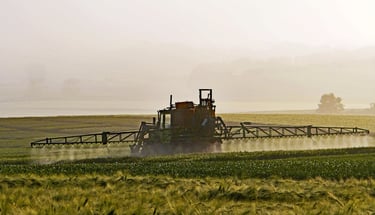
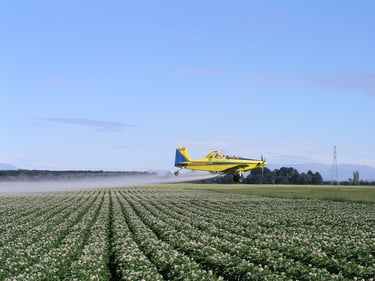

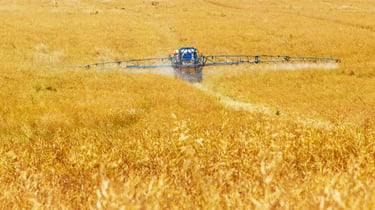








"Conventional" agriculture relies on machinery and fossil fuels
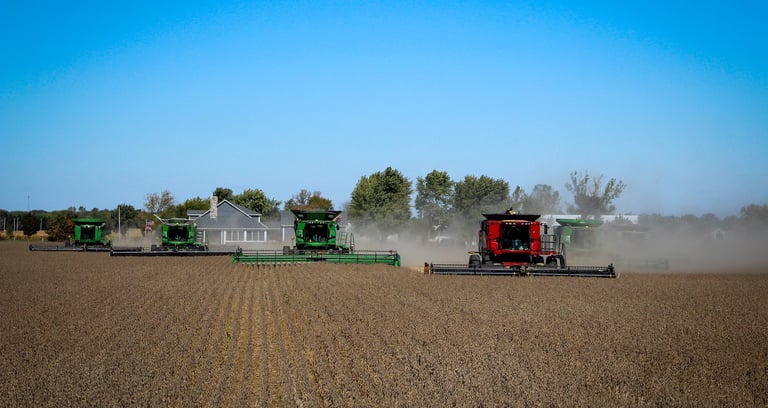

For several decades, the intensification of agriculture has also involved the deployment of hyper-productive artificial systems. The province of Almeria in southeastern Spain, which is one of the driest regions in Europe, has seen the emergence of a "plastic sea" in recent decades, with greenhouses visible from space (top and middle left photos). In the 1950s, the land there was mainly covered with scrub, pasture and a few small plots of outdoor cultivation. Today, greenhouses cover 40,000 hectares there, nearly all the surface of the small coastal plain called Campo de Dalías. They are a major source of off-season tomatoes, peppers, cucumbers and melons for people all over Europe. Watering is provided by pumping groundwater.
For their part, the Netherlands has chosen intensive agriculture based on technology (photos in the middle right and bottom), with gigantic greenhouses, lit 24 hours a day and maintained at constant conditions of temperature and humidity in order to ensure the production of various fruits and vegetables in all seasons. The Netherlands is thus the globe’s number two exporter of agricultural and food products (in value), just behind the United States, whose surface area is 270 times larger.
These methods of agriculture certainly make it possible to reduce land use by concentrating production on "small" areas, but they involve the massive extraction of various resources (water, fossil resources for fertilizers, etc.) and energy (for the control of temperature and humidity, lighting, for the export of agricultural products all over the world, etc.), as well as on a total disconnection with nature, for example regarding the lack of seasonality.
Source of images: NASA for top image (https://earthobservatory.nasa.gov/images/150070/almerias-sea-of-greenhouses), Tom Hegen for other images (https://www.tomhegen.com/collections/the-greenhouse-series).
Towards an ever more industrial and technological agriculture
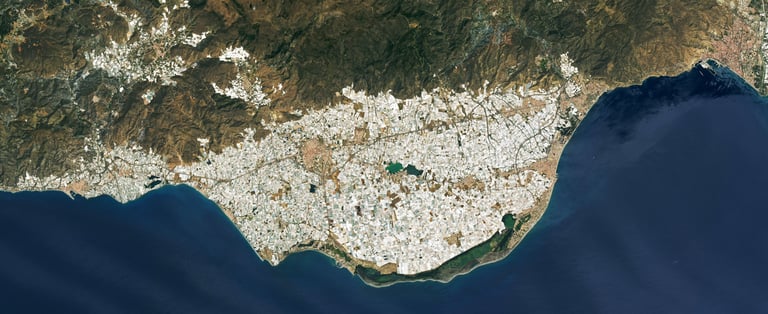


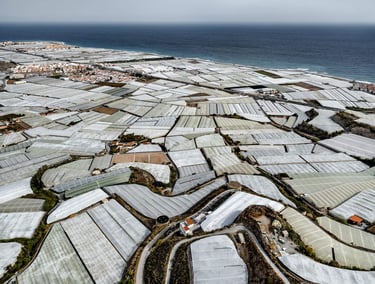


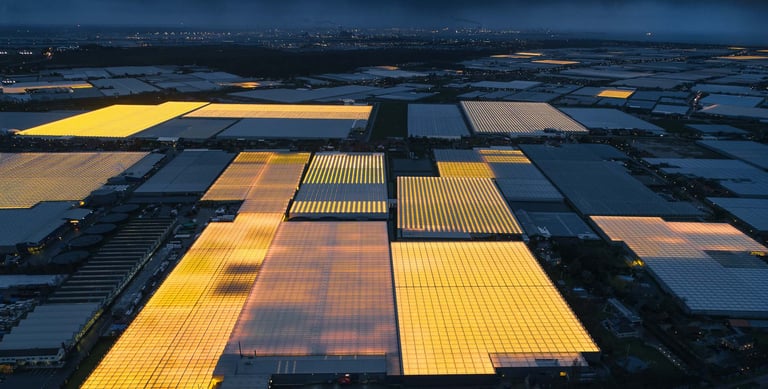

The Anthropocene is characterized by a massive exploitation of plants, but also of animals. More than 1,000 billion animals are consumed annually by humans, including a large number of farm animals [6]. Thus, billions of animals are exploited continuously for their eggs, their milk, their meat... We are talking, for example, of 300 million cows, 600 million sheep, 1 billion pigs or 70 billion chickens slaughtered each year [6].
Within mammals, humans and their livestock represent 96% of the biomass [7]! The remaining 4% are wild animals. Similarly, poultry constitute 70% of the biomass of living birds on this planet [7]!
Not to mention the treatment of animals, these massive farms have major consequences on the biosphere. By counting only the direct effects (i.e. excluding the effects linked for example to the production of fodder, to deforestation, etc.), the countless farm animals would be responsible for nearly 6% of greenhouse gas emissions [10]. Cattle in particular emit a lot of methane. Livestock generates pollutants (in particular nitrogen and phosphorus compounds), requires large quantities of water as well as considerable agricultural land: approximately 3/4 of agricultural land is used for meat production, through grazing and fodder production [1, 2].
Source of images: Pixabay.
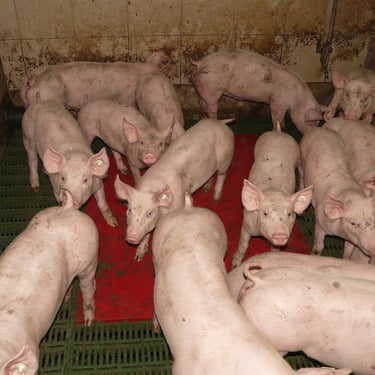

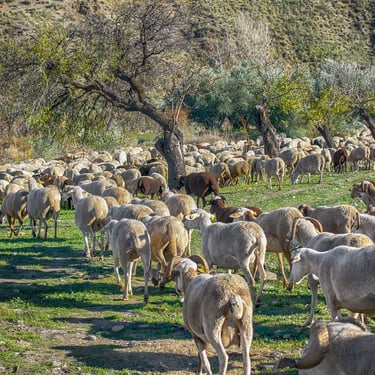

The time of an industrial exploitation of animals
Animal exploitation concerns land animals of course, but also marine animals. Aquaculture is thus experiencing an extraordinary growth: it provided about 50% of the mass of aquatic animals produced for human use in 2020, compared to only 20% in the 1990s [14]. Photos: a fish fam in Croatia (left) and an oyster farm in France (right). Source of images: Tom Hegen (https://www.tomhegen.com/collections/the-aquaculture-series for left image; https://www.tomhegen.com/collections/the-oyster-farms-series for right image).


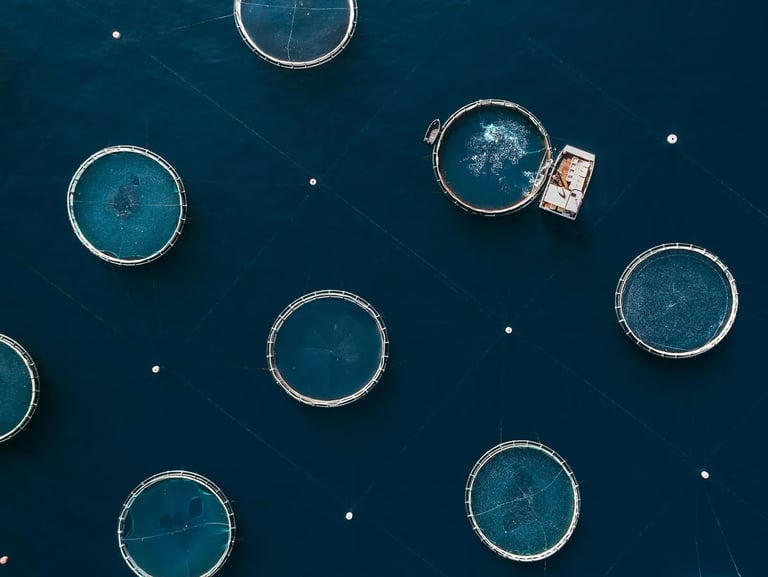

References
[1] FAO, « World Food and Agriculture – Statistical Yearbook 2022 », 2022. [En ligne]. Disponible sur: https://doi.org/10.4060/cc2211en
[2] H. Ritchie et M. Roser, « Land Use », Our World in Data, 2019. https://ourworldindata.org/land-use
[3] Our World in Data, « Land area per crop type », Our World in Data. https://ourworldindata.org/grapher/land-area-per-crop-type
[4] H. Ritchie et M. Roser, « Forests and Deforestation », Our World in Data, 2021. https://ourworldindata.org/forests-and-deforestation
[5] IGN, « Indicateurs de gestion durable des forêts Françaises - Ressources forestières en bois et carbone », 2020. https://foret.ign.fr/IGD/fr/indicateurs/critere1
[6] L214, « Dossier : les chiffres clés de la souffrance animale – Animaux abattus dans le monde », L214. https://www.l214.com/animaux/chiffres-cles/statistiques-nombre-animaux-abattus-monde-viande/
[7] Bar-On, Y. M., Phillips, R. & Milo, « The biomass distribution on Earth », Proc. Natl. Acad. Sci., vol. 115, no 25, p. 6506–6511, 2018. https://www.pnas.org/doi/full/10.1073/pnas.1711842115
[8] WWF, « Living Planet Report − 2020: Bending the curve of biodiversity loss. Gland, Suisse », WWF, Gland, Suisse, 2020. [En ligne]. Disponible sur: https://www.worldwildlife.org/publications/living-planet-report-2020
[9] H. Ritchie, M. Roser, et P. Rosado, « Pesticides », Our World in Data, 2022. https://ourworldindata.org/pesticides
[10] H. Ritchie, M. Roser, et P. Rosado, « CO₂ and Greenhouse Gas Emissions », Our World in Data, 2020. https://ourworldindata.org/co2-and-greenhouse-gas-emissions
[11] H. Ritchie, M. Roser, et P. Rosado, « Fertilizers », Our World in Data, 2020. https://ourworldindata.org/fertilizers
[12] Y. Birot, « Les forêts et les hommes : quelles co-évolutions ? », 2015. https://www.academie-foret-bois.fr/chapitres/chapitre-1/fiche-1-05/
[13] O. Chardon, Y. Jauneau, et J. Vidalenc, « Les agriculteurs : de moins en moins nombreux et de plus en plus d’hommes », Insee, 2020. https://www.insee.fr/fr/statistiques/4806717
[14] FAO, « The State of World Fisheries and Aquaculture 2022 », 2022. [En ligne]. Disponible sur: https://www.fao.org/3/cc0461en/online/sofia/2022/world-fisheries-aquaculture.html
